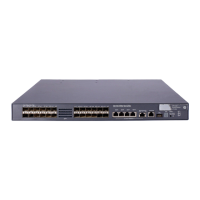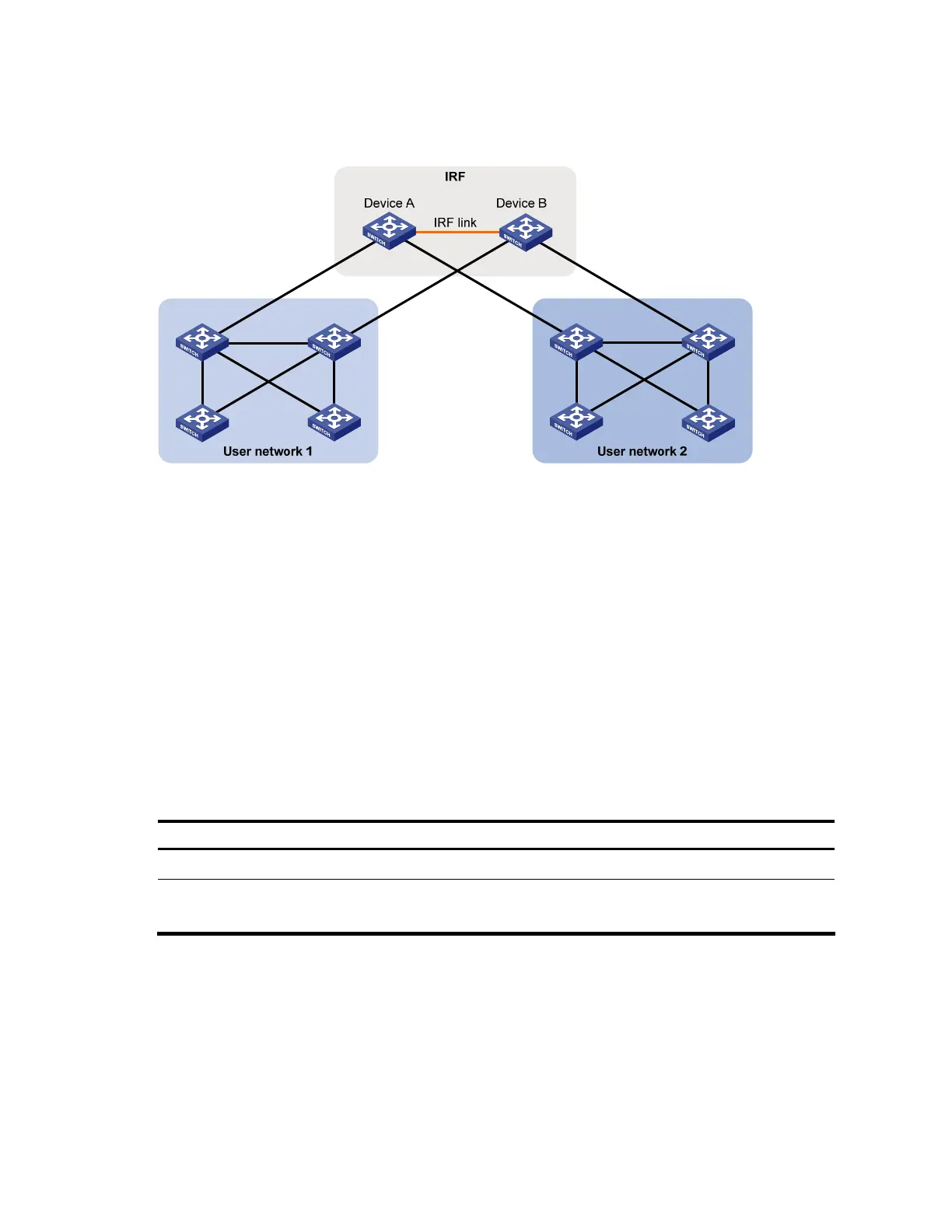88
high availability. The IRF virtual device transparently transmits STP BPDUs from Customer 1 at Layer 2.
Other customer networks (such as Customer 2) act the same as Customer 1.
Figure 27 TC snooping application scenario
In the network, the IRF virtual device transparently transmits the received STP BPDUs and does not
participate in STP calculations. When a topology change occurs to the IRF virtual device or attached
access-layer networks, the IRF virtual device may need a long time to learn the correct MAC address
table entries and ARP entries, resulting in long network disruption. To avoid the network disruption, you
can enable TC snooping on the IRF virtual device.
TC snooping enables a device to actively clear the MAC address table entries and ARP entries upon
receiving TC-BPDUs and to re-learn the MAC address table entries and ARP entries, so that the device can
normally forward the user traffic.
Configuration prerequisites
Disable STP globally.
Configuring TC snooping
Perform the TC snooping configuration on the IRF virtual device shown in Figure 27.
To configure TC snooping:
To do… Use the command… Description
1. Enter system view
system-view —
2. Enable TC snooping
stp tc-snooping
Required
Disabled by default
TC snooping and STP are mutually exclusive.
TC snooping does not take effect on the ports on which BPDU tunneling is enabled for STP. For more
information about BPDU tunneling, see the chapter “BPDU tunneling configuration.”
For more information about IRF, see the IRF Configuration Guide.
For more information about ARP, see the Layer 3—IP Services Configuration Guide.
For more information about MAC address table entries, see the chapter “MAC address table
configuration.”

